My detailed guide to the weather for Prague in December, January & February and practical tips on how to plan your visit to Prague in winter 2024/2025.
Is Prague worth visiting in winter?
Winter is a great time to visit Prague, especially around the festive Christmas time. Unlike visiting Prague in summer, the winter season needs a lot more planning, especially if you are not used to the cold weather.
You might need to think about more activities to do indoors and plan your day around coffee places or museums. It’s also a great opportunity to visit opera or theatre (such as the Estate Theatre), go to see the latest film in one of the independent cinemas in Prague or explore the town from the inside of a warm tram instead of walking in the cold.

What is the weather like in winter in Prague ?
The winter months in Prague are very cold with temperatures as low as -10 Celsius or -15 Celsius at night and -5 Celsius or 0 Celsius during day.
The coldest month in winter is usually January, but the end of December can be quite cold too.
If you are unlucky, you might also get some days when the sky is grey and permanently cloudy. It will feel like it’s getting darker even sooner than 4 pm and you might see the light fading from 2 pm.
On the other hand, when the sun is shining, Prague is beautiful in the winter, especially if you get a bit of snow and you can go for a walk in a park, go outdoor ice-skating or do other outdoor activities.
VISITING PRAGUE IN WINTER

What are the temperatures like in winter in Prague ?
Prague’s location is quite unique as it’s sheltered by the hills and it’s usually a lot warmer than other parts of Czech Republic in the winter. If you compare the temperatures between the countryside outside the Prague and Prague itself, the centre can be easily few degrees warmer. In the winter even 1-2 degrees makes a big difference on how cold the weather can feel.
The temperatures in winter can be as low as – 10 Celsius (14 Fahrenheit) and as high as +5 Celsius (41 Fahrenheit), but most of the time expect the temperatures to hover around 0 Celsius (32 Fahrenheit).
There are of course anomalies to this. For example this year the beginning of December was super cold with temperatures dropping to – 5 Celsius during the day and – 10 C during the night. By the end of December, the highest temperature measured was about 17 Celsius during the day, which is normally a spring type of temperature.

How does the weather change during winter in Prague?
The weather starts to get colder in December and we usually get the first snow before Christmas. In Prague this can mean just one or two days of light snow fall, which can melt away after a few days.
The weather gets much colder in January, when the temperatures drop permanently below 0 Celsius (32 Fahrenheit) and you can expect more snow, which will usually stay on the ground for a few days.
By February the weather is starting to get a little bit warmer, but only by a few degrees. Over the last years, Prague has again started to experience really long and cold winters with temperatures around 0 Celsius (32 Fahrenheit) well into the spring.

What does the cold weather feel like in the winter?
There is one super important thing I have to mention about the cold in Prague. The temperature might often be below zero, but because this cold is ‘dry’ it doesn’t feel as cold as if it was 0 or even 2-3 Celsius in London or UK.
This is because of relatively low humidity. The reason why I’m saying this is, as long as you are sufficiently wrapped in good warm clothes and have decent winter shoes, you don’t have to worry that you’ll be cold!
Once you get used to the temperature slightly below 0 Celsius, there is not much difference in how -2 Celsius or -5 Celsius feels like.
Saying, that, you’ll notice when the temperature goes up again, and every degree will feel like a big difference (in how warm it will feel).
The warmest part of the day is between 12-3 or 4 pm especially if you get a bit of winter sun and the temperature rises above zero.
Once the sun goes down after 4 pm it will get cold very quickly, so make sure that you either wrap up extra warm for the evening or plan some indoor activities instead.

How to read the local weather forecast
The weather is forecasted in Celsius and the temperatures are given in the shade.
For example if the mid day temperature is given as -2 C and it’s forecasted to be sunny, it’s a fair chance that the air will feel much warmer (because of the sun) than -2 C.
Quite often, the weather forecast will mention something like ‘-1 C feels like – 5 C’, this means that the humidity is much higher than normal and that although the temperature is ‘only’ -1 Celsius it will feel a lot colder than that – so dress for the colder temperature.
Another thing that I always pay attention to, especially in the winter, is the hourly temperature forecasts.
It’s all very well knowing that during day it will be -1 C , but if I’m going on a day trip outside Prague and getting up at 5 am, I need to also know that at that time it will be about -8 Celsius and that this temperature will only slowly go up during the day and it will take up to mid day to get to -1 C. So, again I need to dress for – 8 C (and not just for -1C).
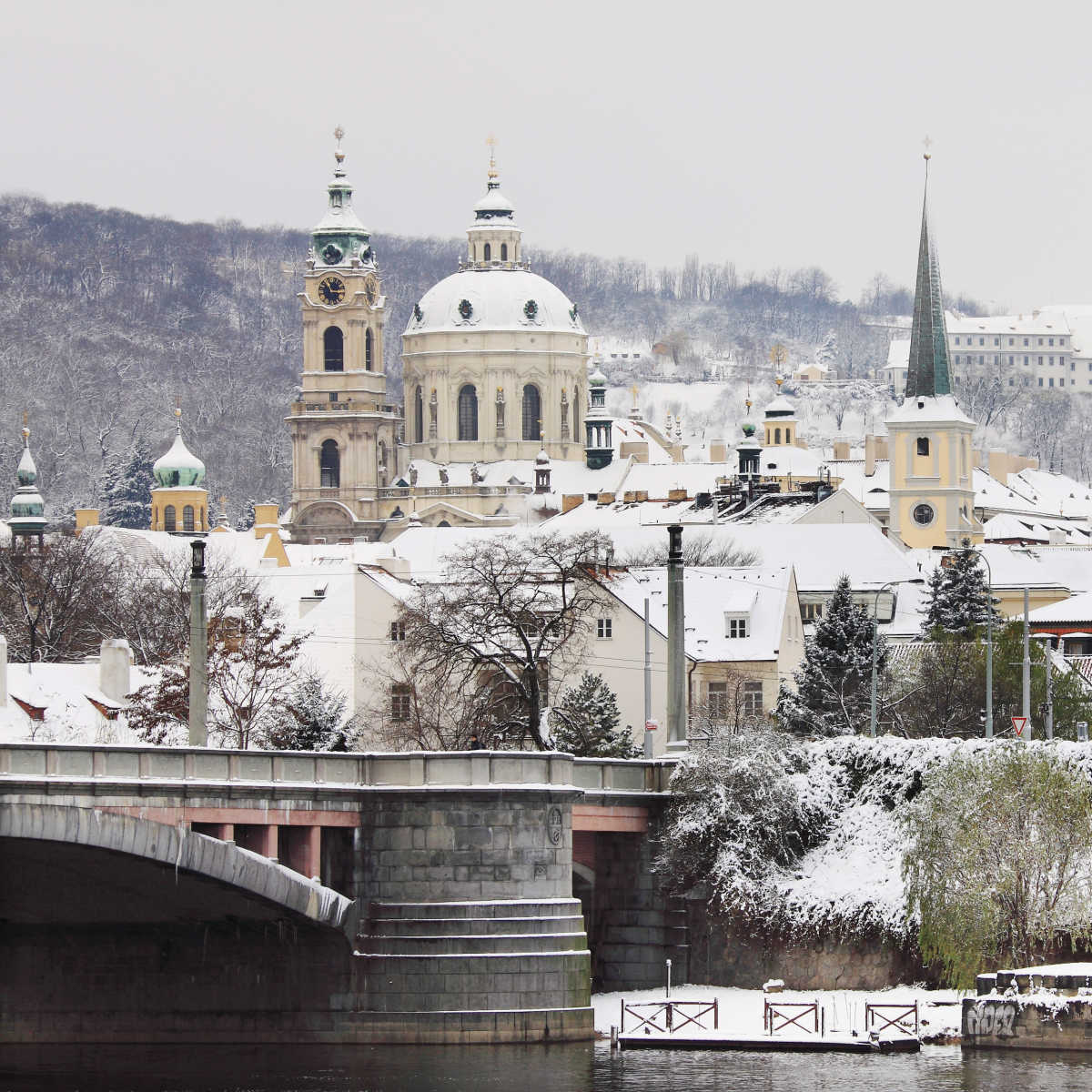
How cold does it get during winter in Prague?
The official statistics mention that there are on average 31 days a year below 0 Celsius. The maximum was 70 days, but that was back in 1963.
Most of these cold days would be spread across the later part of December, January and February (and possibly into early March too).
The average temperatures in December are around 0 Celsius, in January – 2 Celsius and in February -1 Celsius (during the day).
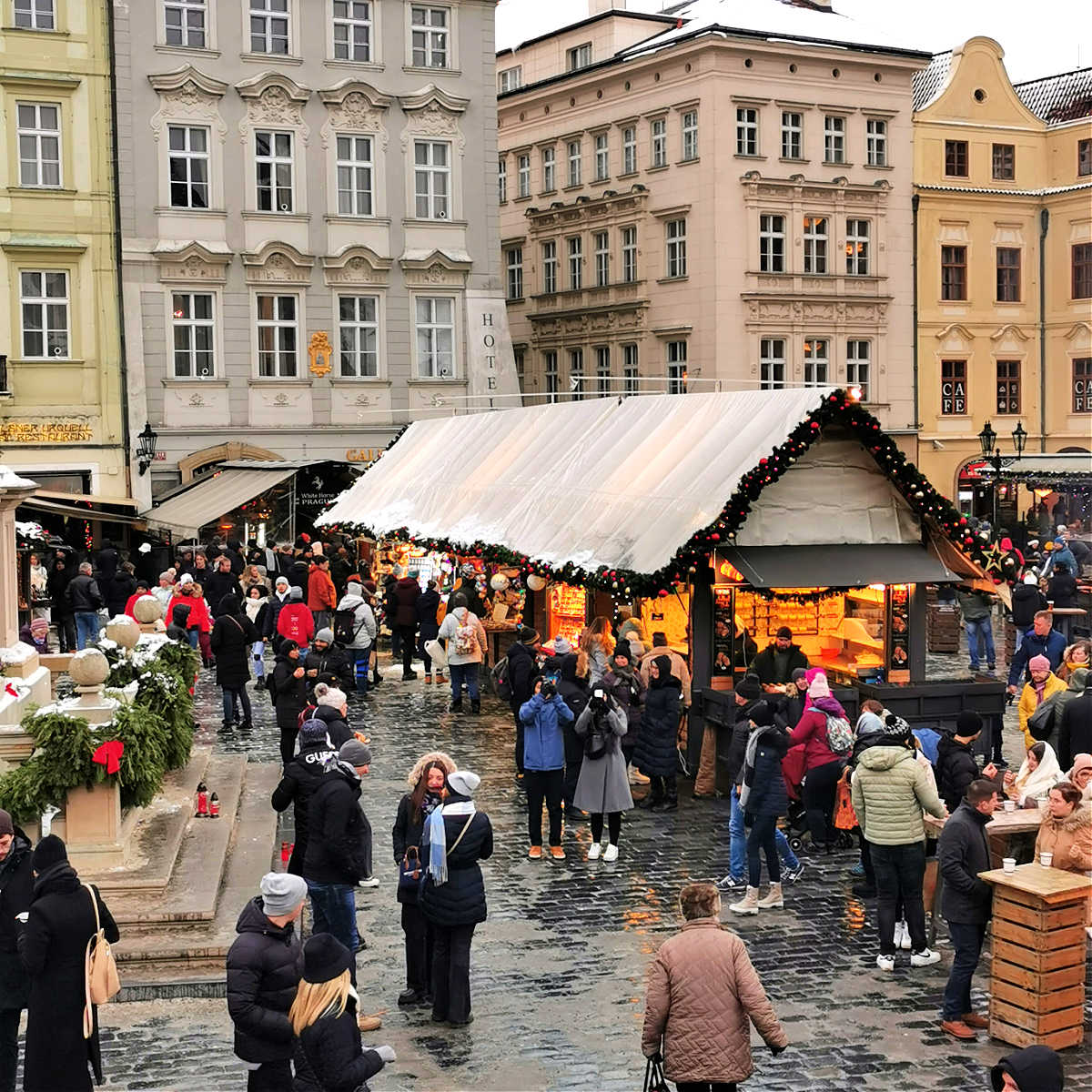
How much sunshine do you get in Prague in winter?
Despite the cold weather, you also get quite a few days when it’s nice and sunny.
December is the month with the lowest amount of sunshine – on average this is only 47 hrs across the whole month. Bearing in mind that the sunlight is only about 8 hrs a day, it’s just a couple of hours each day at best.
The bad news is that you either get sunny days or grey days and quite often, these wouldn’t mix together. I can tell, that if the sky is grey with no clouds in the morning, I know it will stay like this all day and it’s very unlikely I’ll see the sun at all.
January sees sunshine hours improving a little to average of 53 hrs (with the maximum of 90 hrs in 1993) and February is even better with 82 hrs on average (and 144 hrs maximum recorded in 1990).
For me, knowing the amount of sunshine in Prague is not just something to bear in mind to make sure I dress appropriately for the day, but also because I know which day is better to take photos and which day might be just too dark and gloomy.
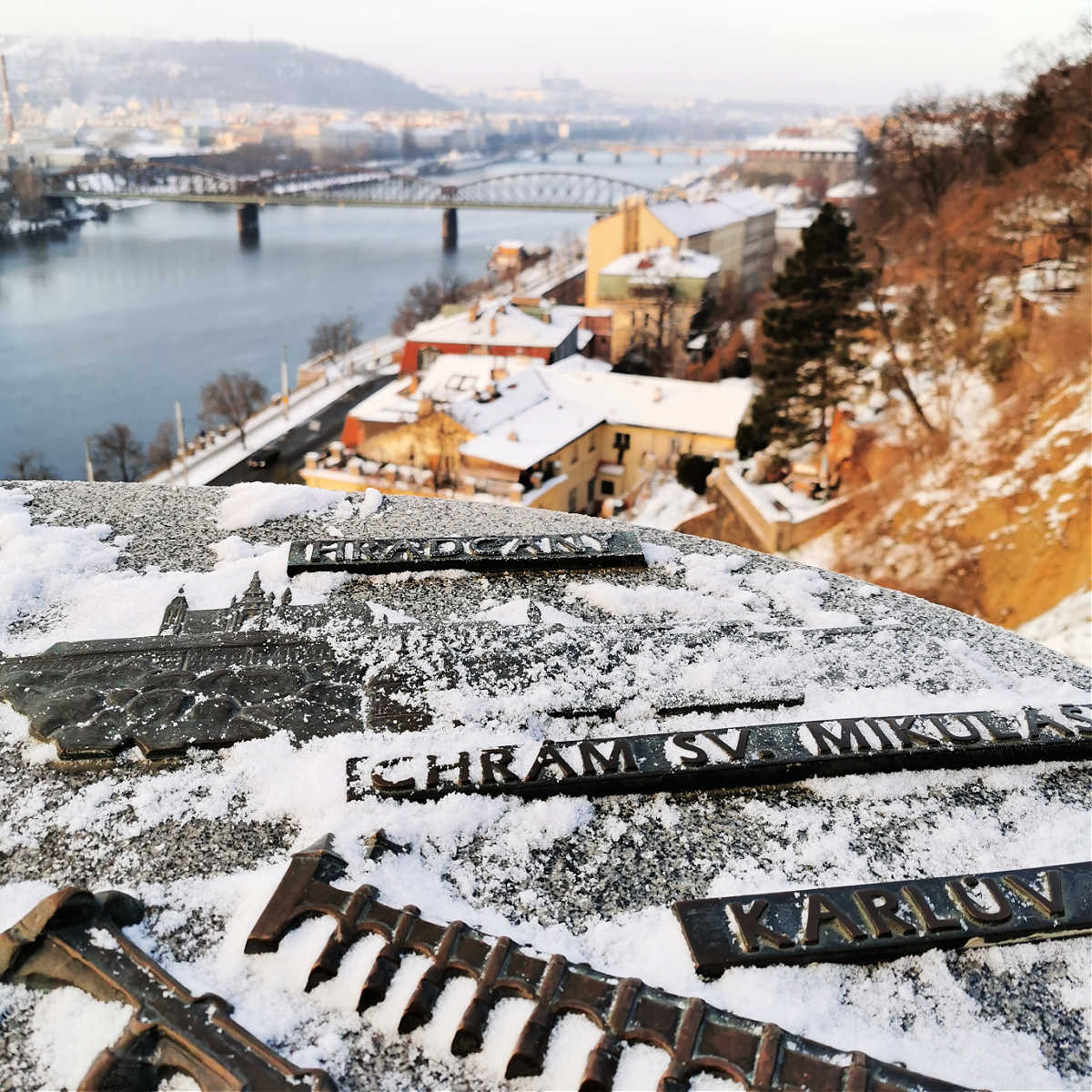
How much does it snow in Prague in winter?
On average, Prague gets around 47 days of snow, with the maximum ever recorded 100 days in 2010.
These days are spread across the whole winter – December, January and February, but the can easily stretch into spring. Prague can still get snow in March and early April.
The heaviest snow fall is January and February, but this year, we had quite a strong snowfall in early December, so you never know.
The amount of snow can also vary from a light dusting to a few centimetres. Most of the time the snow doesn’t last very long, because Prague is much warmer than Czech countryside.
Snow disappears quite quickly from the streets and pavements, but if you visit any of the Prague’s larger parks (such as Stromovka or Letna) you can experience a beautiful winter wonderland for a bit longer.
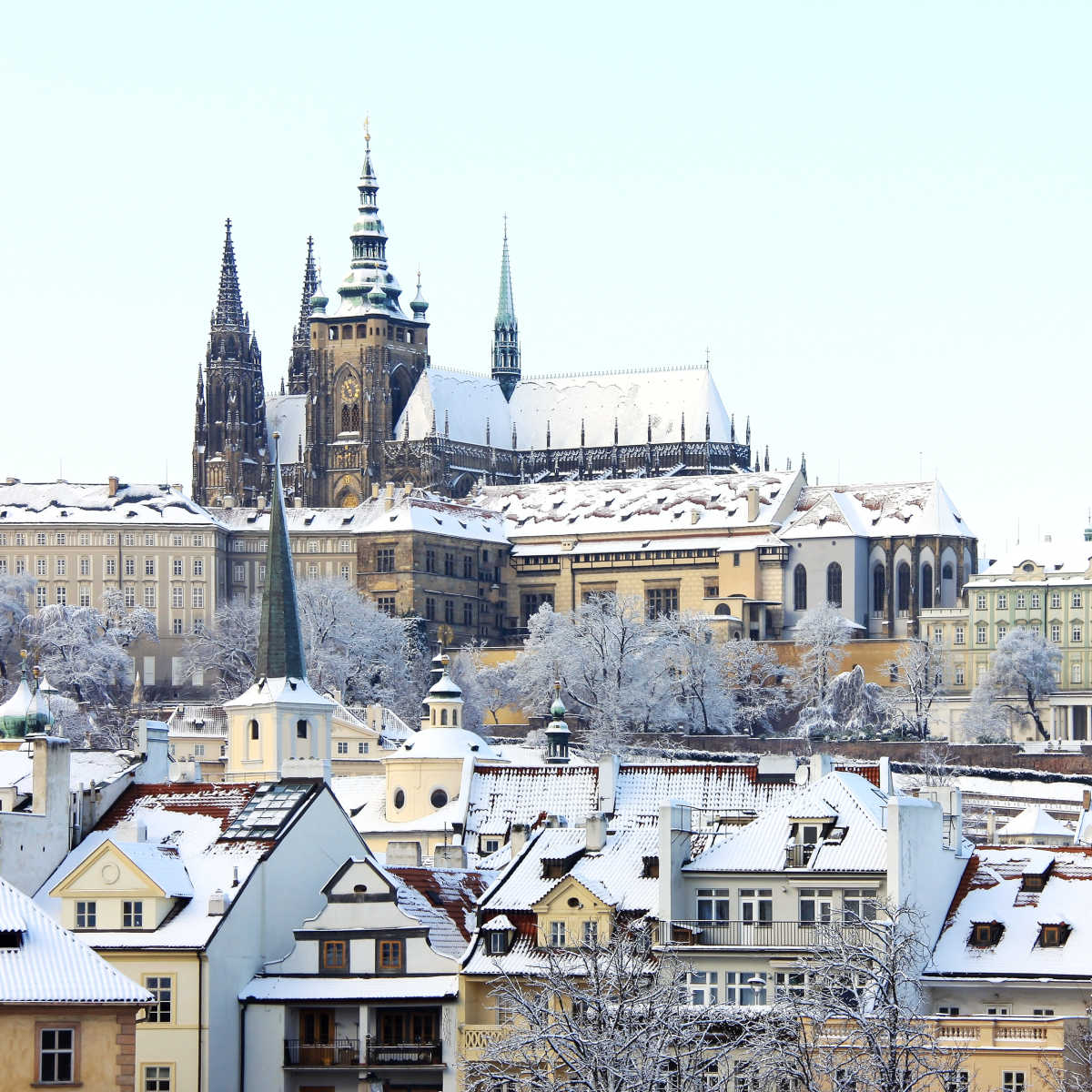
How much daylight is in the winter?
In the morning the sun (or light) appears just shortly after 7.30 am. The sunset in December is very shortly after 4 pm and by 4.30 pm is completely dark. This means that the day has about 8 hrs of light (or sun if you are lucky!).
December
At the beginning of the month, the sunrise is at 7.37 am and sunset at 16.03 pm and on 21 December (the shortest day of the year – Winter Solstice, after this date, the days start to get longer again), the sun comes out at 7.57 am, and the sunset is at 16.01 pm
January
January starts with sunrise at 8.01 am and sunset at 16.09 pm by the middle of January the day already gets slightly longer with sunrise at 7.56 am and sunset at 16.26 pm.
February
The beginning of February sees sunrise at 7.38 and sunset at 16.54 pm, which extends to sunrise at 6.50 am and sunset at 17. 40 pm by the end of the month.

What does Prague’s nature look like in winter?
Most trees in Prague lose their leaves in autumn, so by winter, most parks and gardens are bare, and there is very little greenery.
This is why everything looks so cheery when the snow falls, and you get that lovely layer of white snow everywhere.
Riegrovy Gardens above Wenceslas Square are particularly great for down-the-hill sledging, and it’s full of families and children sliding down the hill.
Whilst the snow in the middle of Prague doesn’t usually last very long, parks just outside the centre such as Stromovka, Sarka Walley or Pruhonice Park keep their snow for longer.
There is an outdoor ice skating ring in Letna Park, Smichov (in Prague 5 district) and also on Shooter’s Island (close to the National Theatre).

How to walk around Prague when it’s icy or snowy
Once the temperature drops, the snow falls or melts away and you get ice, Prague pavements become one big skating ring.
What might be great fun for the kids, it’s not much fun for adults and certainly not for any older person trying to cross the road or get to the shops.
Whilst the roads get gritted fairly quickly, the pavements might not, as these are usually the responsibility of the houses in front of the pavement.
Although the snow should get removed by the local council services, if there is a big snowfall, it might not happen quickly enough.
To make sure that you don’t end up falling and hurting yourself follow my quick tips.
- Make sure that you wear the best winter shoes you have with a good grip.
- If you can walk on fresh snow on the side of the pavement, rather than compacted see-through snow, ice or black ice in the middle of the pavement.
- Walk on the road, that’s cleared rather than on the pavement that has compacted icy snow.
Fresh snow is fine to walk on with good-grip shoes, and it’s normally not that slippery. The worse is black ice (snow that has melted and then frozen into ice), which can sometimes hide under fresh snow. Black ice looks like a spilt water, which is very deceiving and even a thin layer (which might look like a polished pavement surface) can be very dangerous.
Also, be careful to walk on any cobbled or tiled pavement after it’s been raining and the temperature has dropped to 0 Celsius. Even a thin ice over the pavement can be very slippery.
If you are walking with somebody and holding hands when it’s icy I would wholeheartedly recommend that you don’t do that.
If one of you falls, you’ll take the other person down with you automatically and apart from falling you might also hurt your hand badly by being pulled down so quickly.
If you don’t hold hands, you are more likely to react quickly and catch the other person (if it’s safe for you to do that) or guide them gently down to the ground to break their fall.
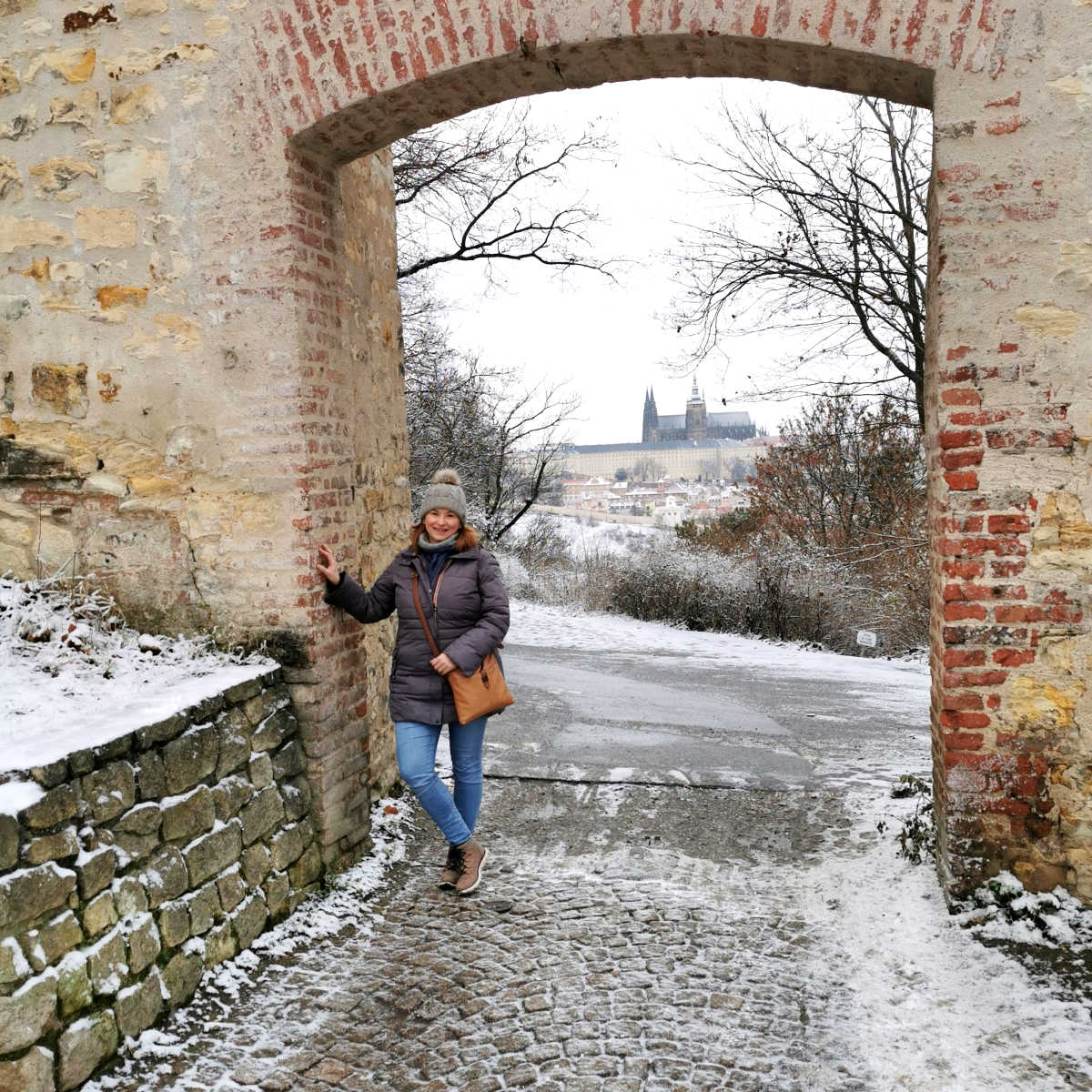
What to pack for your Prague visit in winter
Apart from the general packing advice make sure that you have warm walking shoes, warm fleece or jumper and a winter jacket.
I tend to go for warm layers, so I pack a warmer body layer with long sleeve, fleece and a jacket or a coat.
If the weather is warm (for whatever reason), it might rain instead of snow, so bring an umbrella or rainproof jacket.
If it’s very cold and I decide to wear a shorter jacket I also wear a pair of leggings, especially under jeans. Jeans are one fabric that doesn’t actually make your body warm, so leggings or warm tights are a must (for me, anyway!).
I also bring a winter hat or a cap as it gets colder in the evening and the wind could be quite freezing.
You’ll also need warm gloves and a scarf, depending on much you feel the cold.
If you feel the cold, I really recommend walking shoes with thick rubber soles (that keep your feet off the ground), thick socks (or two pairs of socks), leggings or thick tights under good warm trousers, long winter feather down jacket, scarf, gloves and a winter hat that covers your forehead.
I find that by stopping the cold from getting into my body through thin shoes and stopping it from escaping by wearing a winter beanie hat, I always feel nice and toasty!
If you are planning to do longer day trips, it’s a good idea to bring a good day backpack and add an extra layer, hat or extra pair of socks for when the temperature drops in the evening.
My emergency supplies for extra cold days are spare shoe insoles (or even a couple of thick cardboard cut-outs in the size of the shoe), loose trousers ( to fit at least 2-3 layers underneath), neck warmer and two hats if needed (one thin one, one slightly thicker).
No matter how careful you dress, your face will feel the cold, so applying a good thick face cream (and leaving it to soak in) is a good way to protect your skin.
If you like taking photos with your phone, like me, you might like to get one of those special gloves that have magnetic touch points. These kind of gloves are a game changer, because I’m forever trying to get the right angle before I take my photos and my hands get cold really quickly.
STAY IN TOUCH
Hope this blog post inspires you and as ever I’d love to what you think! Let me know in the comments below or catch up with me over on Instagram.
Magdalena
This blog post was originally written on 3 January 2023 and last updated on 3 January 2023
PIN TO KEEP FOR LATER

